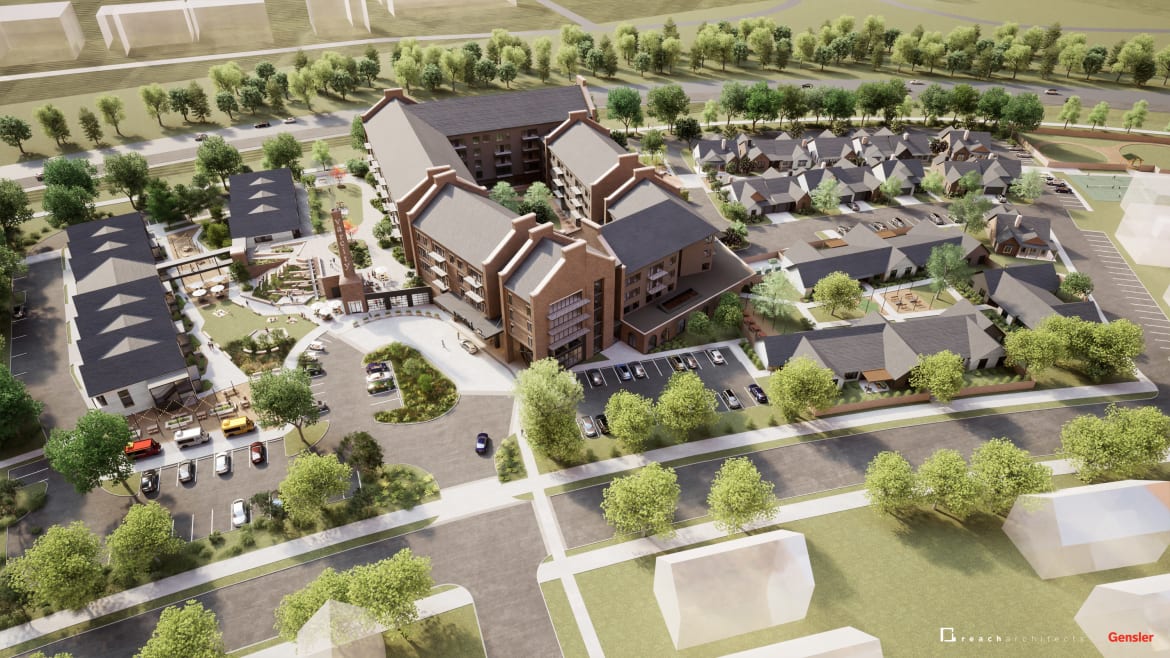 Varcity at Purdue
Varcity at PurdueA university decides to construct on-campus housing for seniors. Normal stuff, right? But the residents they’re courting aren’t in their last year of college. Quite the opposite: they’re in their 60s and older. While their substantially younger peers may be enrolled in classes, practicing sports, or taking part in standard college revelry, these residents won’t be enrolled students—just living nearby. They may visit the library in the morning, audit a lecture class in the afternoon, and come home to their residence at night for an all-ages ballroom dancing workshop. They are mere minutes from university medical centers. And they can choose to participate in studies and research projects led by faculty and the student body.
Arizona State University, SUNY Purchase, and Purdue University are just the latest institutions hopping on the trend of intergenerational, university-based living—a concept that’s been around since the turn of the century, but is exploding faster post-pandemic than anyone predicted. McNair Interests, a real estate firm based in Houston, Texas,, even spun off a brand in January that will focus solely on developing university-based communities for older adults. Ryan Haller, the managing principal of this spin-off, called Varcity, told The Daily Beast that it plans to announce projects with at least six different colleges within the year and is planning to break ground on another half-dozen campuses by 2026.
The first of these projects will be at Purdue, which announced its partnership with Varcity last month. Developers will begin construction next January on 231 apartment, villa, and townhouse-style units located in the northeast corner of the university’s campus. While a typical resident of this community will be in their mid-60s, the development will contain restaurants for students, residents, and West Lafayette city-dwellers, as well as multipurpose space for talks and events, Purdue for Life Foundation president Matt Folk told The Daily Beast.

 2 years ago
729
2 years ago
729 
















 English (United States) ·
English (United States) ·